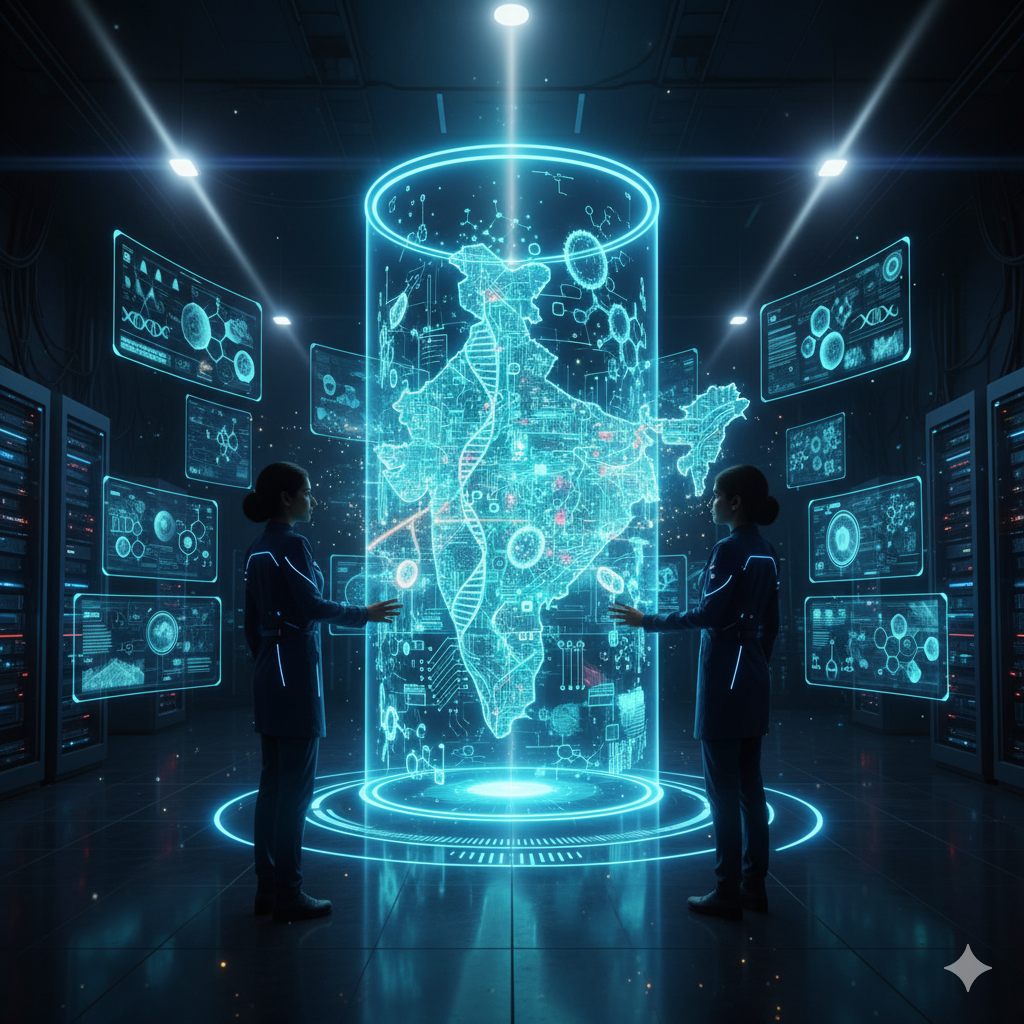Introduction
As technology advances, the quest for faster, smaller, and more efficient computing systems has led researchers to explore unconventional computing paradigms beyond traditional silicon-based processors. One fascinating and innovative field is DNA computing, which uses the molecular structure of DNA to perform computational tasks.
DNA computing harnesses the natural properties of DNA molecules for data storage, information processing, and problem-solving, potentially revolutionizing how computers operate. This article delves into the fundamentals of DNA computing, its working principles, advantages, challenges, and potential applications — providing an educational overview for students, researchers, and technology enthusiasts.
What is DNA Computing?
DNA computing is a form of biocomputing that uses DNA, biochemistry, and molecular biology hardware, instead of traditional electronic computing components, to perform computations.
Unlike classical computers that use bits (0s and 1s) to encode information, DNA computing utilizes the four nucleotide bases of DNA — Adenine (A), Thymine (T), Cytosine (C), and Guanine (G) — to represent data. By exploiting the natural processes of DNA hybridization and enzymatic reactions, DNA molecules can be designed to encode complex problems and generate solutions through molecular interactions.
Historical Background
The concept of DNA computing was first proposed by Leonard Adleman in 1994. Adleman demonstrated that DNA strands could solve a complex computational problem — the Hamiltonian Path Problem, a type of traveling salesman problem — through biological operations.
This breakthrough proved that DNA molecules could perform massively parallel computations, inspiring research into biological alternatives to silicon-based computing.
How Does DNA Computing Work?
1. Encoding Data in DNA
Information is encoded into synthetic strands of DNA by assigning sequences of nucleotides to represent data elements. For example, each vertex or path in a graph can be represented by a unique DNA sequence.
2. Molecular Operations
DNA computing relies on biological operations such as:
- Hybridization: Complementary DNA strands bind to form double-stranded DNA.
- Ligation: Joining DNA fragments enzymatically.
- Polymerase Chain Reaction (PCR): Amplifying specific DNA sequences.
- Separation Techniques: Using gel electrophoresis or affinity purification to isolate desired DNA strands.
3. Parallel Computation
DNA computing exploits the natural parallelism of molecular interactions, where billions of DNA molecules simultaneously undergo chemical reactions. This allows DNA computers to process a vast number of possibilities concurrently.
4. Result Extraction
After the molecular reactions, specific DNA strands representing solutions are isolated and analyzed to decode the computational result.
Advantages of DNA Computing
1. Massive Parallelism
DNA molecules can interact in parallel at a scale unachievable by traditional computers. This property allows DNA computers to solve complex combinatorial problems more efficiently.
2. High Data Density
DNA can store enormous amounts of data in a very small physical volume. For example, a single gram of DNA can theoretically store up to 215 petabytes (215 million gigabytes) of data.
3. Energy Efficiency
DNA computing operates at a molecular level, requiring very little energy compared to electronic computers, making it an energy-efficient alternative.
4. Biocompatibility
DNA computing systems can integrate with biological systems, enabling applications in medicine, biotechnology, and synthetic biology.
Challenges in DNA Computing
1. Speed and Practicality
While DNA computing is massively parallel, the biochemical reactions themselves can be slow and labor-intensive compared to electronic processors.
2. Error Rates
Biochemical processes may introduce errors, such as incorrect hybridizations or incomplete reactions, affecting reliability.
3. Scalability
Designing DNA strands for large-scale problems and managing complex molecular operations remain difficult.
4. Cost
Synthesizing and manipulating DNA strands with precision requires sophisticated lab equipment and expertise, making it expensive.
Applications of DNA Computing
1. Solving Combinatorial Problems
DNA computing is well-suited for NP-complete problems like the traveling salesman problem, graph coloring, and satisfiability problems, where traditional computers struggle with computational complexity.
2. Cryptography
DNA sequences can encode cryptographic keys or generate secure random numbers, enhancing data security.
3. Data Storage
DNA’s dense storage capacity is being explored for archival storage solutions, potentially preserving data for thousands of years.
4. Biological Sensors and Diagnostics
DNA-based logic circuits can be designed to detect specific molecular markers for disease diagnosis or environmental monitoring.
5. Synthetic Biology
DNA computing techniques assist in programming cellular behavior by designing DNA-based logic gates controlling gene expression.
Future Prospects
The future of DNA computing looks promising with advances in biotechnology, nanotechnology, and synthetic biology. Researchers are exploring hybrid systems that combine DNA computing with electronic computers to harness the strengths of both.
Potential future developments include:
- Automated DNA Computing Systems: Robots and microfluidic devices automating molecular operations.
- DNA Nanomachines: DNA structures capable of autonomous actions and computations.
- Integration with Quantum Computing: Combining DNA’s molecular parallelism with quantum algorithms for even greater computational power.
- Personalized Medicine: DNA computing used in designing tailored treatment protocols based on genetic data.
Conclusion
DNA computing represents a groundbreaking fusion of biology and computer science, offering a new paradigm for information processing beyond the limits of silicon chips. By leveraging the natural properties of DNA molecules, it opens up possibilities for solving complex problems, storing vast amounts of data, and interfacing with living systems.
While challenges remain, ongoing research and technological advancements continue to push the boundaries of what DNA computing can achieve. Understanding this emerging field is essential for students and researchers interested in the future of computing, biotechnology, and interdisciplinary innovation.
Summary Points
Future advancements may integrate DNA computing with automation, nanotechnology, quantum computing, and personalized medicine.
DNA computing uses DNA molecules to perform computational tasks via biological processes.
It encodes information using nucleotide sequences and exploits molecular reactions for parallel processing.
The field originated with Leonard Adleman’s pioneering work in 1994.
Advantages include massive parallelism, high data density, energy efficiency, and biocompatibility.
Challenges include speed, error rates, scalability, and cost.
Applications span combinatorial problem-solving, cryptography, data storage, diagnostics, and synthetic biology.




